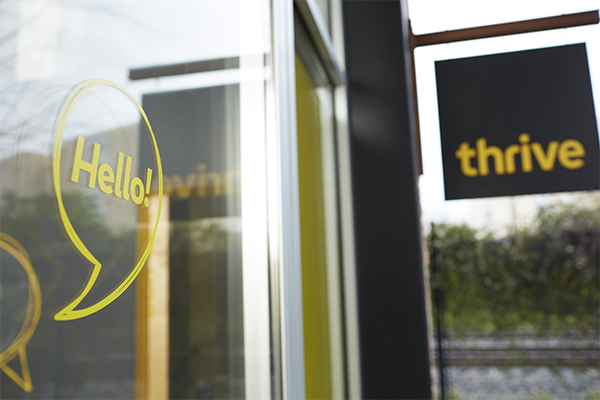Seven Pillars for Starting, Managing, and Growing a Creative Design Firm
If you are a creative entrepreneur and have been around the creative services business long enough, you will have heard a wide range of claims and statistics about the failure rate of small businesses. According to the Bureau of Labor Statistics, 20% of small businesses fail in their first year, 30% fail in their second year, and 50% fail after five years in business. And if that’s not enough, finally, 70% of small business owners fail in their 10th year. So why would you want to start a creative design firm, and more importantly, how do you keep one running?
The idea of running your own business, asserting control over your future, and marching to the beat of your own drum can be incredibly alluring for many creative professionals, but also potentially intimidating. Elon Musk was famously quoted as saying that “starting a company is like staring into an abyss and eating glass.” So why do it?
The answer is passion. And if it’s not already in you, you won’t find it hiding between the sofa cushions. It has to be intrinsic. You need to have passion in vast amounts with an equally impressive dose of resilience too. Why?
Running a creative design firm is challenging 95% of the time. There’s overhead to worry about (studio space, insurance, meeting payroll, etc.), employees to keep motivated, and clients to win over—but the other 5% of the time, it is outstanding! It takes a particular type of person to ride the highs and lows of entrepreneurship, and you must be deeply passionate about why you do what you do because that will get you through those challenging moments. Creative entrepreneurship is certainly not for the faint-hearted. Businesses go through different growth phases, from startup to exit, and each has challenges: existence, survival, success, take-off, and maturity.
Let’s fast forward to year 2 of “Livin’ the Dream!” You’ve willed your creative design firm into existence through your passion and creativity and have a desk at the local startup accelerator, surrounded yourself with potential opportunities, and done the most important things to get your first clients. At first, getting going is more important than being right, but this rapidly changes as you enter the subsequent phases of small business growth: survival and success.
At THRIVE, we have adopted a seven-pillar model to help manage our trajectory, development, and profitability throughout the years, with each pillar adjusting and changing in importance over time.
1. Vision
In the early days of building your creative design firm, there are many hurdles to overcome, but you slug it out. You don’t always know what you are doing, but you don’t quit (there’s the resilience thing again). Resilient people have a clear idea of where they are headed in life.
“The two most important days in your life are the day you are born and the day you find out why.” —Mark Twain.
To stay focused and resilient in business, having a clear vision is essential. A strong and well-articulated vision becomes the basis for all your business strategies and decisions, large and small. It provides a beacon to the future of your business in the medium and long-term and a strategic plan for success. Without one, your business can’t develop a coherent strategy to lead you toward your overall goal. Write a vision statement for your firm comprised of the following three dimensions:
– Your purpose:The difference you are trying to make in the world: Why you do what you do.
– Your ambition:What are you trying to accomplish as a firm? Be bold. Describe what you will feel, hear, think, say, and do as if you had reached your ambition now.
– Your promise:The pledge you make to your clients: what you do for them and why they should care.
2. Positioning
If you want your creative design firm to survive and thrive, think hard about your positioning. How will you compete in a creative industry when there’s barely room to breathe? How will you set your firm apart from your competitors in a way that builds preference for you among your target audience?
Develop a concise, easy-to-understand brand positioning statement for your firm that distills your key service propositions into a short paragraph. Your positioning statement should include the following
– What do you do?
– Who do you serve?
– Why do clients choose you?
– How are you different from similar firms in the marketplace?
– Proof that supports your claims.
You may offer a niche service, specialize in a specific industry, be role-focused, or adopt a quality-of-service position. Whatever it is, you need to nail your niche. Your differentiators must meet three criteria: they must be true, provable, and relevant to your target audience. Always be cognizant of what messages you are sending with your positioning choices.
3. Marketing
With clarity around your vision and positioning, you must now build your marketing plan to generate a steady stream of exciting opportunities. Don’t count on anyone just discovering you—hope is not a strategy. You must get the marketing flywheel going as fast as you can if you want your creative design form to succeed.
Marketing budgets for established consulting firms are typically high, with 10–15% of total revenue allocated to marketing. But when you are getting your firm up and running, you must bootstrap your marketing efforts and use the most appropriate marketing techniques for maximum impact with the lowest investment.
Prospective clients learn and gather information in a digital environment, so you must make online lead generation the keystone of your marketing plan. Investing in your digital footprint is non-negotiable as digital marketing has become a mainstay of modern professional services marketing. Prioritize the following for a good return on investment in the growth stages of your firm:
– Optimize your online presence (SEO):Optimize your website to improve your search engine rankings and attract new visitors.
-Demonstrate your relevance and expertise by prioritizing producing thought leadership blogs and articles and making it visible in channels where your target audiences go to learn.
– Develop a Novel Point of View (NPV) that flies in the face of conventional wisdom and stimulates new thinking and positions you at the forefront of your chosen niche in terms of ideas. Novelty helps you stand out in the crowded creative services space.
– Network on social media: Connect and engage with your target audience on social networking platforms.
4. Culture
Building a positive and strong culture is one of the most important things you can do as a leader; it’s the glue that sticks your creative design firm together. It impacts your day-to-day activities. Ignore culture-building at your peril. It should be an integral part of your firm’s success, helping to differentiate your firm, attract clients, and entice and retain the best talent.
“Culture eats strategy for breakfast every time.” —Peter Druker
Establishing a tangible company culture can be challenging at first because it is based on unspoken attitudes, mindsets, and social behaviors. As soon as you can, you should codify your culture in a culture book. Define your vision and values, and document expected behaviors and ways of working so you have a common vocabulary that everyone can use and understand.
5. Talent
As your creative design firm evolves, you’ll reach the point where you will need to hire some people to help your firm grow and develop. I’m not overstating it when I say that hiring is the most important thing you do, and doing it well is a competitive advantage as most companies do an awful job of finding and retaining talent.
Creative design firms typically have a mixture of high performers and marginal performers, and they spend more time managing their marginal performers than helping their high performers achieve more. Chronic low performers take up too much of your time and cause you the most frustration when you really want to invest in helping your high achievers achieve more. How do you ensure that you hire top performers when great talent is scarce?
Use your firm’s culture code to evaluate a candidate’s skills, attitudes, and beliefs, helping you assess the kind of people you bring onto your team. Invest as much time in finding the right employees as you do in finding the right clients, and use your core values as the critical filter for screening candidates to ensure that you hire like-minded individuals that match the company’s culture.
At THRIVE, we have the mantra “Hire the attitude, train the skill.” While this is not absolute, we have found that A-players are high-energy, fast-paced, driven to succeed, and collaborative with a can-do attitude. Do the following to improve the probability of a successful hire:
– Create a scorecard and rate each candidate’s competency level.
– Recruit from Good talent knows good talent and can make hiring quicker and more accurate.
– Stage the interview process. Start with a virtual screening call, then move to a deeper virtual competency interview and, for candidates who seem promising, conduct an in-person interview to assess if their values complement the firm’s and do a deep dive into their portfolio.
6. Clients
Nothing happens without a client, but finding the right clients for your creative design firm is not just about the numbers: company size, or horizontal industry focus, annual revenue , etc. You also need to look at potential clients and ask yourself if they can achieve success for themselves and you. Why would you want to work with clients who cannot achieve success with your expertise and advice?
Both the client and the design firm play an equal role in developing a successful client-agency relationship. The best relationships share common characteristics: trust, collaboration, chemistry, mutual respect, accountability, and honesty. Bad clients take up all your time and resources only to exit the relationship sooner than you would like. It costs you time and money to onboard a new client; it’s your responsibility to ensure they are the right fit.
Asses potential new clients on the following criteria to determine if they align with your vision and values and are a good fit for your firm:
– Culture: Does the client share your core values and mirror your ways of working?
– Competence: What does the client need to learn to successfully implement your advice? Are they a learning organization, and do they have the competence to learn a new way of working to achieve success?
– Resources: Does the client have the budget and time to buy your expertise, learn how to deploy it, and be successful with it?
– Expertise: Do you have the knowledge and experience to solve the client’s problem? Can they be successful through your services?
7. Financial
You likely started your firm for two reasons. The first is to do great creative work and impact society; the second is to make money. The two are inextricably tied together. Many creative firms don’t make money because they don’t understand the financial mechanics of running a consulting business necessary to implement sound financial management for their firm. As the saying goes, “Revenue is vanity, profit is sanity,” and how much profit you make determines to what extent you have a business. Is it a hobby that costs you money, or is it a feasible enterprise that generates a profit beyond expenses?
Pricing your services appropriately to reflect your value and impact is one of the most important activities you will undertake in managing your firm. If you want lots of client wins, price your services low. If you undervalue your services, you will likely not be respected and will diminish the impact you can have on a client.
Pricing is a marketing tool; it sends a message about your firm and the expertise and value a client can expect to receive. Clients who value design as a strategic business tool usually choose a price in the upper half of the design firm’s proposal. Set your fees high initially, but not too high that you’ll scare clients away or . You’ll then have to meet those expectations and deliver the expected value and expertise. Remember, profit isn’t optional.
Implementing the points addressed in this article—a strong and well-articulated vision, a positioning statement, successful marketing strategies, a positive firm culture, a smart hiring process, and appropriate pricing for services—are necessary to create and maintain a lasting creative design firm. Developing these vital elements of your company will undoubtedly pay off when done correctly with the right attitude and mindset.
As an entrepreneur, you must be willing to gather insights and knowledge from reliable sources, take risks, and adjust accordingly—and recognize your mistakes and understand that they are only aiding your personal growth. The challenges ahead may not all feel inviting at first, but remember that you have chosen a path that requires dedication above anything else. By following it, you have already shown great potential!
Although starting and maintaining a business isn’t always easy, spinning each setback into opportunity is vital in achieving long-term success. With a clear vision, strategy, values, and ambition, you can proudly power through challenging times with great results.
________________________________________________________________
This article was originally published in INNOVATION Summer 2023, the Industrial Design Society of America’s (IDSA) quarterly and one of the best places to learn about the practice of industrial design. Every issue of INNOVATION reaches IDSA’s membership, universities, associations, design consultancies and subscribers around the world.
INNOVATION Magazine is one of the benefits of membership. Join today.
________________________________________________________
Are you ready to implement the Seven Pillars? THRIVE can help.
________________________________________________________
ABOUT THRIVE
THRIVE is a strategic design firm innovating at the frontiers of health and well-being.
We work with ambitious leaders to create experiences that people love through Informed Design™. Our work gives leaders, teams, and organizations the courage and conviction to move confidently forward and design what’s next. You can find our innovations positively impacting lives in homes, hospitals, and businesses around the world.
We help you design growth in eight ways:
1. SHIFT PERSPECTIVE: We help you see customers with fresh eyes so you can find disruptive insights that let you tap into game-changing opportunities.
2. ACTIVATE INSIGHT: We distill insights into simple, actionable frameworks that are powerful and easy to understand so you can make smart decisions.
3. SEIZE NEW OPPORTUNITY: We find new ways for you to compete and new markets to scale, then prioritize ideas with the greatest potential.
4. SHAPE THE FUTURE: We develop actionable plans that generate growth through innovation so you can set a vision and step into your future.
5. ACCELERATE TIME TO MARKET: Our processes enable you to operate agilely, seize opportunities and get products to market quickly and effectively.
6. CREATE SERIOUS BRAND LOVE: Our human-centered, holistic approach to brands delivers big-on emotion to keep consumers coming back.
7. CONQUER COMPLEXITY: We can help you tame complexity, achieve clarity and make products and services easy to understand and a joy to use.
8. EMPOWER CHANGE” We help businesses shift their mindsets, foster new partnerships, and create momentum for innovation and growth.
Contact Us today to setup a free consultation to discuss all your specific research, design and innovation needs. Collaboration begins with a conversation!
ATLANTA | CHICAGO










